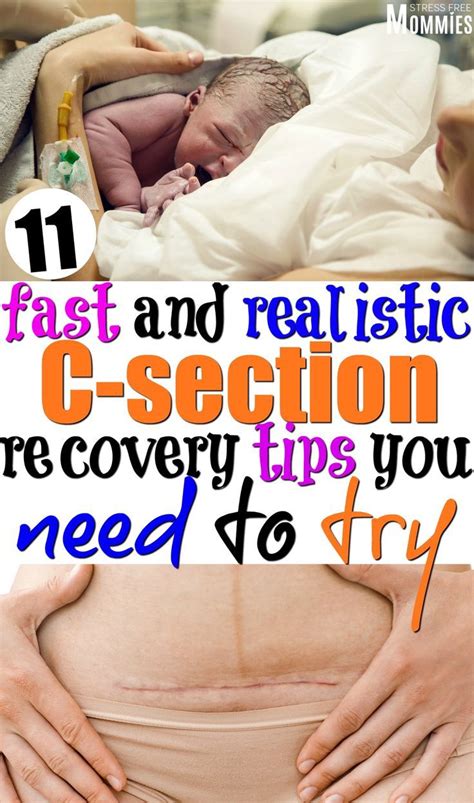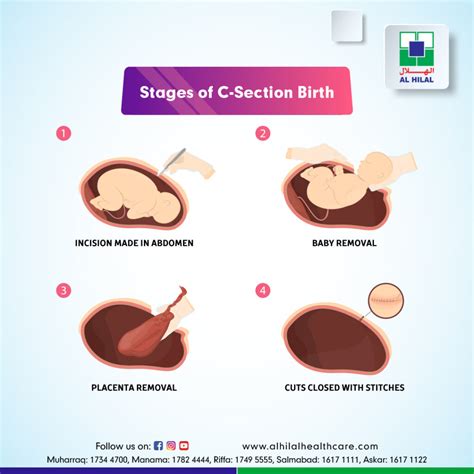Intro
Recovering from a cesarean requires careful postpartum care, wound healing, and pain management to ensure a smooth recovery and minimize c-section complications.
Recovering from a cesarean section, also known as a C-section, is a unique and challenging experience for new mothers. Unlike vaginal delivery, C-sections involve major abdominal surgery, which requires a longer recovery period. The importance of proper post-operative care cannot be overstated, as it directly affects the mother's physical and emotional well-being, as well as her ability to care for her newborn. In this article, we will delve into the world of C-section recovery, exploring the benefits, working mechanisms, steps, and key information related to this topic.
The journey to recovery begins immediately after the surgery, with the mother being taken to the post-anesthesia care unit (PACU) for close monitoring. During this time, the medical team will assess the mother's vital signs, pain levels, and overall condition. It is essential to follow the doctor's instructions and attend follow-up appointments to ensure a smooth and complication-free recovery. As the mother navigates the recovery process, she will encounter various physical and emotional challenges, including pain management, wound care, and bonding with her baby.
As the mother begins her recovery journey, it is crucial to understand the different aspects of the process. A C-section is a major surgery that requires patience, dedication, and support from loved ones. The road to recovery can be long and arduous, but with the right mindset and care, mothers can overcome the challenges and enjoy a healthy and happy postpartum experience. In the following sections, we will explore the different aspects of C-section recovery, including the benefits, working mechanisms, steps, and key information related to this topic.
Understanding C-Section Recovery

Physical Recovery
Physical recovery from a C-section involves the healing of the surgical wound, the return of bowel and bladder function, and the management of pain and discomfort. The mother's body will take time to recover from the surgery, and it is essential to follow the doctor's instructions and attend follow-up appointments to ensure a complication-free recovery. Some of the key aspects of physical recovery include:- Managing pain and discomfort with medication and other interventions
- Caring for the surgical wound to prevent infection and promote healing
- Returning to normal bowel and bladder function
- Gradually increasing physical activity and mobility
Benefits of Proper C-Section Recovery

- Reduced risk of complications and infections
- Faster healing and recovery times
- Improved pain management and reduced discomfort
- Enhanced bonding and attachment with the baby
- Increased confidence and self-esteem
- Better overall physical and emotional well-being
Emotional Recovery
Emotional recovery from a C-section is just as important as physical recovery. The mother may experience a range of emotions, from excitement and joy to anxiety and depression. It is essential to acknowledge and address these emotions, seeking support from loved ones, healthcare providers, and mental health professionals when needed. Some of the key aspects of emotional recovery include:- Managing stress and anxiety
- Coping with feelings of guilt or shame
- Building a support network of loved ones and healthcare providers
- Prioritizing self-care and self-compassion
- Seeking professional help when needed
Working Mechanisms of C-Section Recovery

- Hormonal changes: The mother's hormonal balance will shift significantly after childbirth, affecting her physical and emotional well-being.
- Physical changes: The mother's body will undergo significant physical changes, including the healing of the surgical wound and the return of bowel and bladder function.
- Emotional changes: The mother may experience a range of emotions, from excitement and joy to anxiety and depression, which can affect her recovery and well-being.
Steps to Ensure a Smooth C-Section Recovery
Ensuring a smooth C-section recovery requires careful planning, attention to detail, and a commitment to self-care. Some of the key steps include:- Following the doctor's instructions and attending follow-up appointments
- Managing pain and discomfort with medication and other interventions
- Caring for the surgical wound to prevent infection and promote healing
- Gradually increasing physical activity and mobility
- Prioritizing self-care and self-compassion
- Seeking support from loved ones and healthcare providers
Key Information Related to C-Section Recovery

- The importance of proper wound care and infection prevention
- The need for pain management and discomfort relief
- The benefits of gradual increases in physical activity and mobility
- The importance of self-care and self-compassion
- The need for support from loved ones and healthcare providers
- The potential risks and complications associated with C-section recovery
Practical Examples and Statistical Data
Practical examples and statistical data can help illustrate the importance of proper C-section recovery. For example:- A study published in the Journal of Obstetrics and Gynecology found that mothers who received proper post-operative care and support had a faster recovery time and fewer complications.
- A survey conducted by the American College of Obstetricians and Gynecologists found that 75% of mothers reported feeling overwhelmed and anxious during the postpartum period.
- The Centers for Disease Control and Prevention (CDC) reports that C-sections account for approximately 31% of all births in the United States.
Conclusion and Final Thoughts

We invite you to share your thoughts and experiences with C-section recovery in the comments below. Have you had a C-section and want to share your story? Do you have any questions or concerns about the recovery process? Let us know, and we will do our best to provide you with helpful information and support.
What are the most common complications associated with C-section recovery?
+The most common complications associated with C-section recovery include infection, bleeding, and reactions to anesthesia. It is essential to follow the doctor's instructions and attend follow-up appointments to minimize the risk of complications.
How long does it take to recover from a C-section?
+The recovery time for a C-section can vary depending on individual factors, but most mothers can expect to take 6-8 weeks to fully recover. It is essential to follow the doctor's instructions and attend follow-up appointments to ensure a smooth and complication-free recovery.
What are some tips for managing pain and discomfort during C-section recovery?
+Some tips for managing pain and discomfort during C-section recovery include taking medication as directed, using heat or cold packs, and practicing relaxation techniques such as deep breathing or meditation. It is also essential to follow the doctor's instructions and attend follow-up appointments to ensure proper wound care and pain management.
